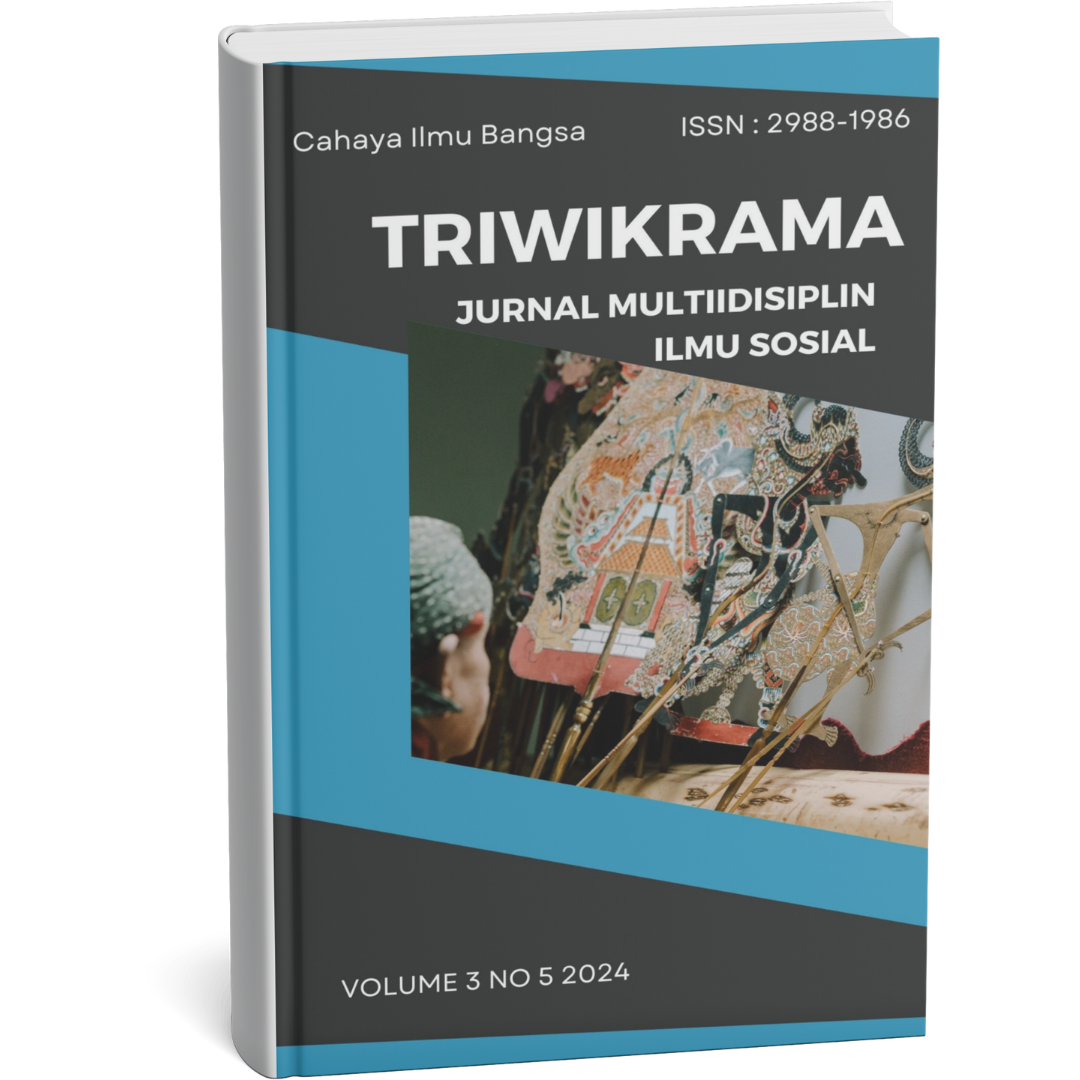REPRESENTASI PERAN KAKAK DALAM FILM MY ANNOYING BROTHER VERSI INDONESIA (STUDI ANALISIS SEMIOTIKA ROLAND BARTHES)
DOI:
https://doi.org/10.9963/9pzcqb58Keywords:
Representasi, kakak, film, semiotika, Roland BarthesAbstract
Penelitian ini bertujuan untuk mengetahui bagaimana representasi peran kakak ditampilkan dalam film My Annoying Brother versi Indonesia melalui pendekatan semiotika Roland Barthes. Latar belakang penelitian ini didasarkan pada pentingnya relasi kakak-adik dalam keluarga, khususnya dalam budaya Indonesia yang menjunjung tinggi nilai kekeluargaan.Film My Annoying Brother versi Indonesia menjadi objek utama dalam penelitian karena menyajikan narasi kakak-adik yang kompleks dan emosional. Hasil penelitian menunjukkan bahwa secara denotatif, tokoh kakak ditampilkan sebagai sosok yang keras, egois, dan dominan. Namun secara konotatif, sifat tersebut mencerminkan bentuk kasih sayang yang tersembunyi dan tidak diekspresikan secara langsung. Pada tingkat mitos, film ini menciptakan konstruksi sosial bahwa sosok kakak laki-laki diharapkan menjadi pelindung dan pemimpin dalam keluarga. Representasi ini menggambarkan realitas sosial yang tidak ideal namun manusiawi, dan mampu menyampaikan nilai kekeluargaan secara emosional melalui simbol dan narasi yang kuat.
This study aims to explore how the role of the older brother is represented in the Indonesian version of My Annoying Brother through Roland Barthes’ semiotic approach. The background of this research is based on the importance of sibling relationships, particularly in Indonesian culture which upholds strong family values. The Indonesian version of My Annoying Brother was chosen as the main object of study because it presents a complex and emotional sibling narrative. The findings show that, at the denotative level, the older brother is portrayed as harsh, selfish, and dominant. However, at the connotative level, these traits reflect a hidden form of affection that is not directly expressed. At the level of myth, the film constructs a social narrative in which the older brother is expected to act as a protector and leader within the family. This representation depicts a social reality that is not ideal but deeply human, effectively conveying family values emotionally through strong symbols and narratives.
References
Agustina, K. (2022). MODERNISASI TEKNOLOGI NEGARA AMERIKA DALAM FILM ELYSIUM (Analisis Semiotika Roland Barthes). Telangke:Jurnal Telangke Ilmu Komunikasi, 4(2), 38–55. https://doi.org/10.55542/jiksohum.v4i2.406
Al Fiatur Rohmaniah. (2021). Kajian Semiotika Roland Barthes. Al-Ittishol: Jurnal Komunikasi Dan Penyiaran Islam, 2(2), 124–134. https://doi.org/10.51339/ittishol.v2i2.308
Aprilia, E., Ritonga, M. H., & Riza, F. (2022). Jurnal Komunikasi dan Budaya Volume 03 , Nomor 01 , Juni 2022 ISSN : 2723-0929 REPRESENTASI “ GHIBAH ” DALAM FILM TILIK ( SHORT MOVIE 2018 ) REPRESENTATION OF GHIBAH IN TILIK FILM ( SHORT MOVIE 2018 ) Jurnal Komunikasi dan Budaya Volume 03 , Nomor 01 , Ju. 03, 35–50.
Hidayatullah, R. (2022). Desain Penelitian Musik di Era Digital (Sebuah Tinjauan Studi Literatur). Virtuoso: Jurnal Pengkajian Dan Penciptaan Musik, 5(1), 28–40. https://doi.org/10.26740/vt.v5n1.p28-40
Malahati, F., B, A. U., Jannati, P., Qathrunnada, Q., & Shaleh, S. (2023). Kualitatif : Memahami Karakteristik Penelitian Sebagai Metodologi. Jurnal Pendidikan Dasar, 11(2), 341–348. https://doi.org/10.46368/jpd.v11i2.902
Downloads
Published
Issue
Section
License

This work is licensed under a Creative Commons Attribution-NonCommercial-ShareAlike 4.0 International License.










